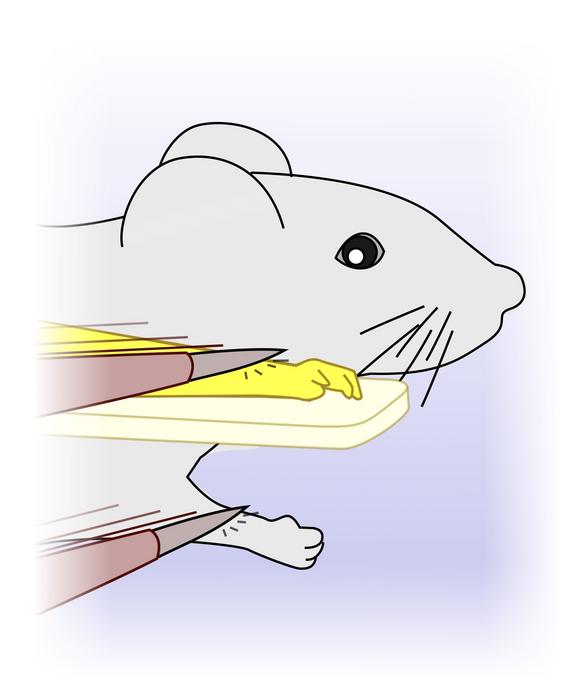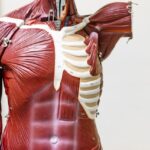
In a groundbreaking study published in PLOS Biology, researchers have demonstrated for the first time that mice can exhibit embodiment of an artificial limb, mirroring a well-studied phenomenon in humans known as the rubber-hand illusion. This pioneering work, conducted by Luc Estebanez and colleagues from CNRS in France, opens up remarkable new avenues for understanding the neurobiological mechanisms underpinning body ownership and has significant implications for improving prosthetic technology.
The rubber-hand illusion, first described in humans, involves creating a sense of ownership over a rubber or artificial hand by synchronously stroking the real hidden hand and the visible fake one. When successful, the participant feels as though the artificial limb is part of their own body. This illusion not only highlights the brain’s plasticity in integrating multisensory information but is also critically important in clinical settings where prosthesis embodiment can make a profound difference in patient quality of life.
Until now, studying embodiment in animal models – especially in a manner that captures detailed physiological and behavioral correlates – has posed a major challenge. The absence of an equivalent experimental paradigm limited researchers to purely observational studies in humans, complicating efforts to dissect the underlying neural circuitry. Estebanez’s team has addressed this gap by devising a carefully controlled adaptation of the rubber-hand illusion protocol for mice, enabling precise experimental manipulation impossible in human subjects.
.adsslot_v1qCV4iSaX{ width:728px !important; height:90px !important; }
@media (max-width:1199px) { .adsslot_v1qCV4iSaX{ width:468px !important; height:60px !important; } }
@media (max-width:767px) { .adsslot_v1qCV4iSaX{ width:320px !important; height:50px !important; } }
ADVERTISEMENT
Their experimental setup involved fixing the heads of mice while presenting a 3D-printed replica of the animal’s right forelimb in a location consistent with normal anatomical positioning. The real limb was hidden from sight and mechanically stabilized. Crucially, the researchers applied temporally controlled brush strokes either synchronously or asynchronously to both the hidden real forelimb and the visible artificial limb. Following this, a sharp stimulus was directed toward the artificial limb, while the animals’ gaze and behavioral responses were recorded using high-speed videography.
The results were striking. When tactile stimulation was synchronized between the real and artificial limbs, mice fixated significantly longer on the threatening stimulus targeting the artificial limb, an indicator of threat perception consistent with embodiment of that limb. This response diminished when stimulation was asynchronous, or when the replacement object was a non-limblike white cube, highlighting the necessity of both precise multisensory input and limb-like appearance for inducing embodiment.
This research provides compelling behavioral evidence that mice, like humans, can fuse visual and tactile cues to extend their body schema to include an external object. Such an embodiment indicates a fundamental cognitive ability in rodents — a testament to the evolutionary conservation of sensory integration processes critical to self-awareness and bodily representation.
Beyond its theoretical importance, this mouse model offers unprecedented experimental leverage. The genetic tractability of mice allows neuroscientists to map the specific neural circuits responsible for embodiment, using optogenetics and in vivo imaging techniques. These approaches could elucidate how the brain resolves conflicting sensory signals to maintain consistent body representation, insights with broad relevance ranging from neural plasticity to psychiatric disorders involving body image disturbances.
Clinically, these findings could revolutionize prosthetics research. A major hurdle in prosthesis adoption among amputees is the lack of “ownership” feeling of the artificial limb, which often results in discomfort, phantom limb pain, and eventual prosthesis abandonment. By uncovering the neural substrates that facilitate limb embodiment using the mouse model, more effective therapeutic interventions and prosthetic designs could be engineered to foster natural integration between biological and artificial limbs.
The research also touches upon intriguing questions regarding the cognitive capacities of rodents. The demonstration that mice can exhibit complex multisensory integration and a sense of bodily self challenges traditional views that such processes are limited to humans or primates. The study thus adds to a growing body of evidence suggesting that rodents possess underappreciated dimensions of sensory and cognitive sophistication.
Luc Estebanez and colleagues emphasize that the model’s scalability allows for systematic exploration of embodiment phenomena, surpassing human experimental constraints. Manipulation of synaptic activity and neural plasticity in this model can reveal the precise temporal windows and molecular signaling pathways critical for the formation and disruption of body schema.
Importantly, the team’s approach employs reproducible and quantifiable behavioral metrics—such as gaze fixation and threat response—to assess embodiment, providing objective endpoints suitable for high-throughput screening in future studies. This objective framework is a significant advancement over subjective self-reports typically used in human rubber-hand illusion experiments.
While the metaphorical “rubber-hand” concept has been a cornerstone in human neuroscience since its inception, its translation to an animal model marks a momentous step forward. The convergence of behavioral science, neurogenetics, and bioengineering heralds a new era of comprehension of how brains distinguish self from other, an essential feature of perception and cognition.
In summary, this study not only bridges a critical gap between human and animal research on body representation but also lays down a robust foundation for future work seeking to unravel the biological basis of embodiment. Its applications extend from fundamental neuroscience to the development of cutting-edge prosthetic solutions that might one day restore lost bodily functions with unmatched naturalness and ease.
Subject of Research: Animals
Article Title: Embodiment of an artificial limb in mice
News Publication Date: June 5, 2025
Web References:
http://dx.doi.org/10.1371/journal.pbio.3003186
References:
Hayatou Z, Wang H, Chaillet A, Shulz DE, Ego-Stengel V, Estebanez L (2025) Embodiment of an artificial limb in mice. PLoS Biol 23(6): e3003186. http://dx.doi.org/10.1371/journal.pbio.3003186
Image Credits: Luc Estebanez (CC-BY 4.0)
Keywords: Embodiment, rubber-hand illusion, prosthetics, body ownership, multisensory integration, mice model, neuroplasticity, optogenetics, sensory perception, body representation
Tags: behavioral effects of artificial limbsclinical implications of prosthesisembodiment in animal modelsexperimental paradigms for studying embodimentmice artificial limb embodimentneurobiological mechanisms of body ownershipneuroscience of prosthetic integrationphysiological correlates of body ownershipprosthetic technology advancementsquality of life improvements with prostheticsrubber-hand illusion in animalssensory integration and brain plasticity


